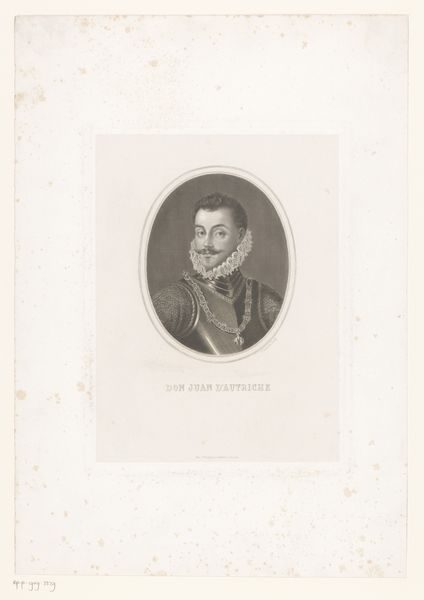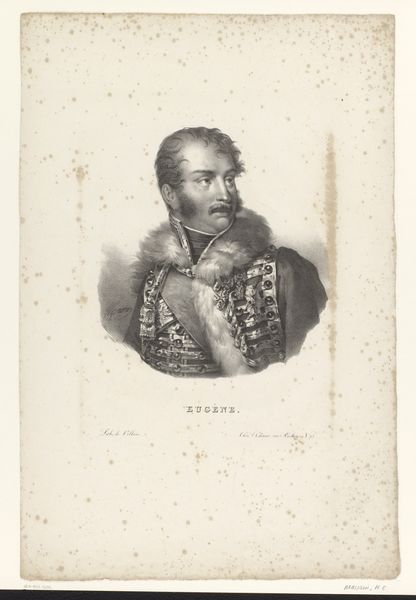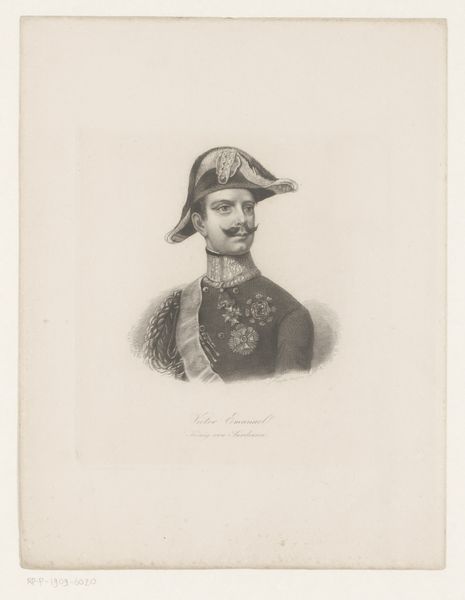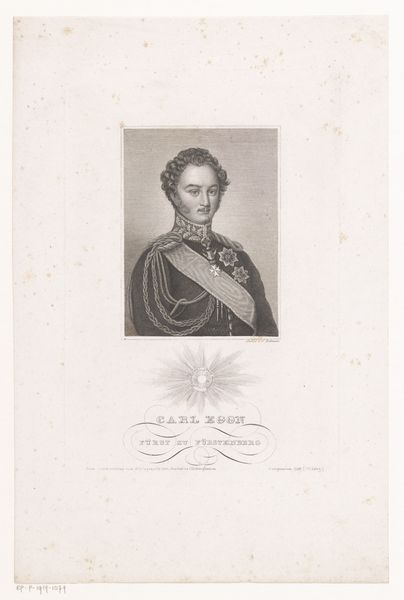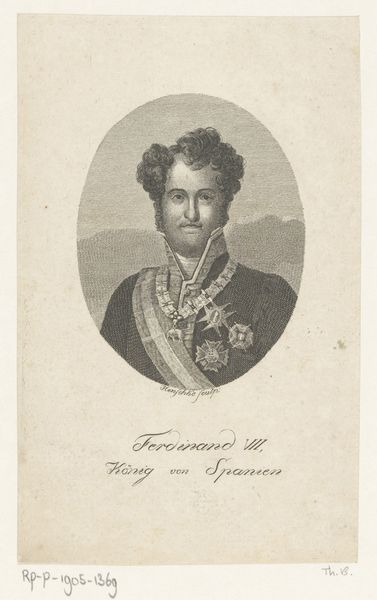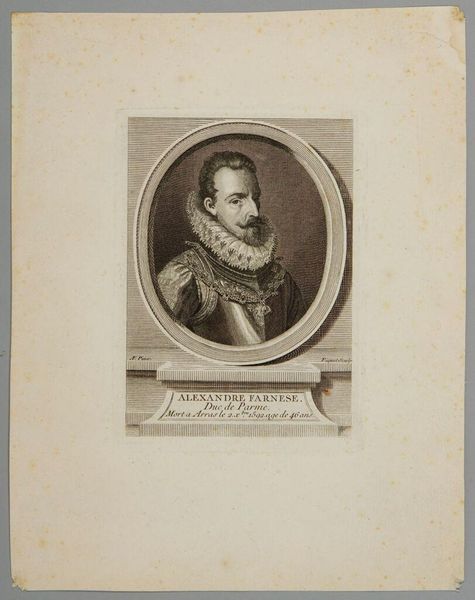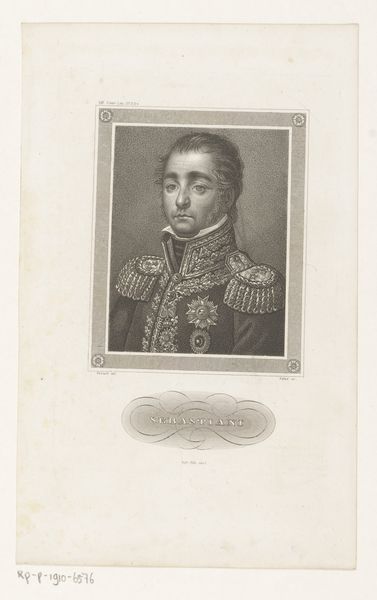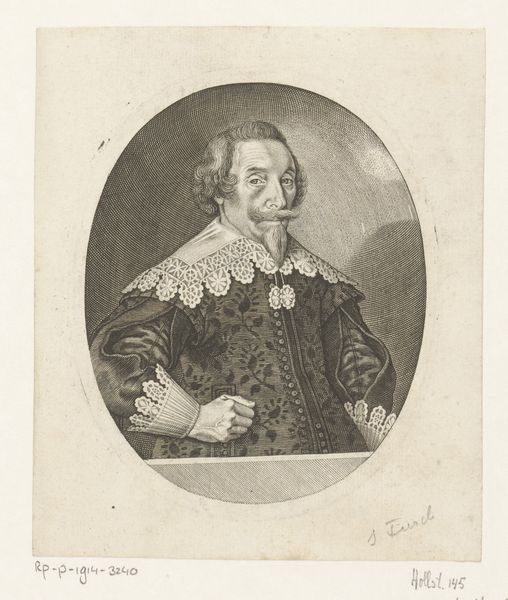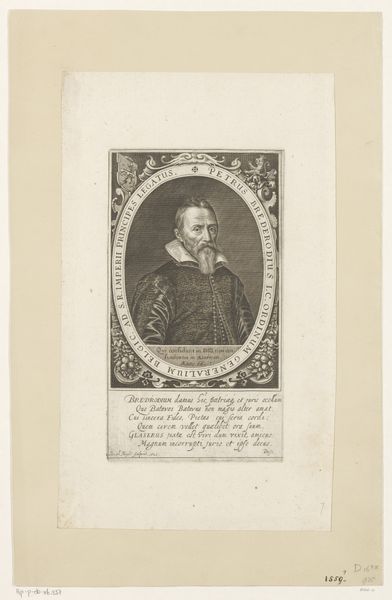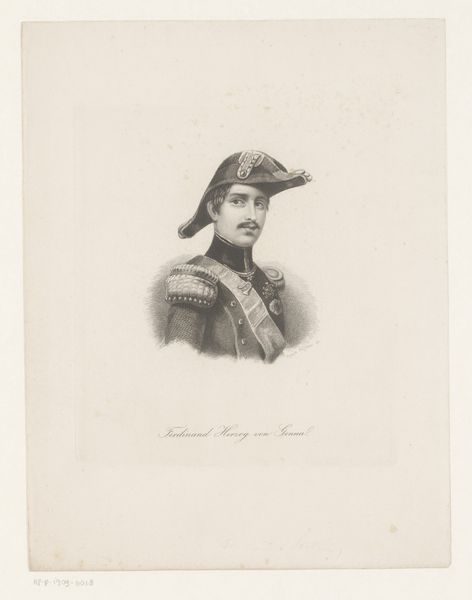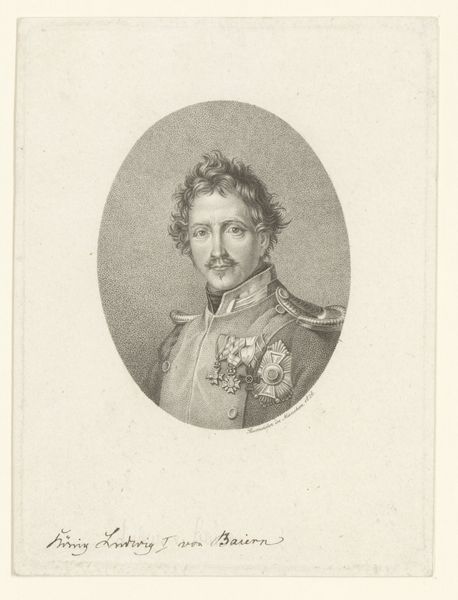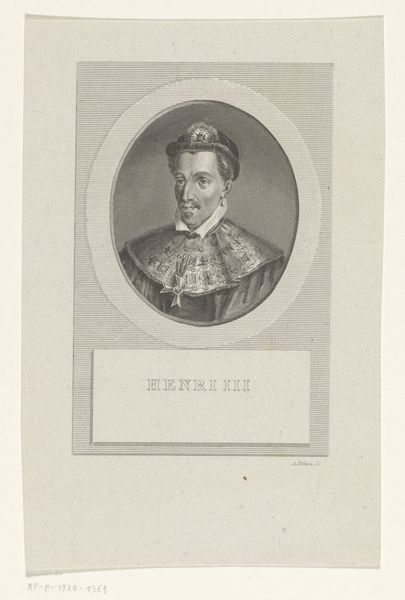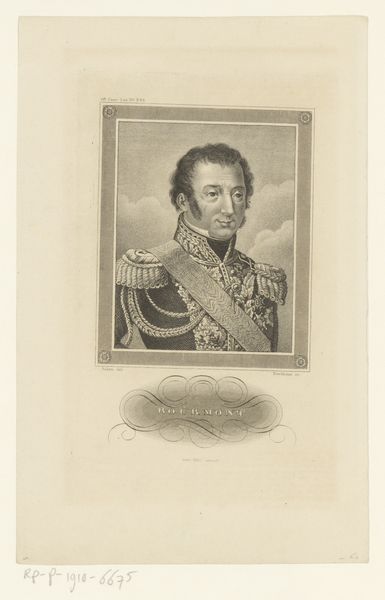
Dimensions: height 250 mm, width 163 mm
Copyright: Rijks Museum: Open Domain
Curator: Here we have "Portret van Stephan, aartshertog van Oostenrijk"—a portrait of Archduke Stephan of Austria—dating from around 1847 to 1895. It's held here at the Rijksmuseum. The artist is Paul Barfus, and he used an engraving technique. Editor: Immediately, I notice the age in the paper. You can practically feel its brittleness. It speaks to a time when even the methods of representation felt deliberate, permanent almost. What are your impressions? Curator: It certainly evokes a bygone era. Stephan looks rather… wistful, don't you think? There's a touch of melancholy in his eyes, a kind of quiet contemplation. Perhaps reflective of the fading power of the Habsburgs at the time. It feels Romantic in its way. Editor: And how complicit are those military regalia? The frogging, epaulettes... That's serious work, all that gold braiding. Look at all the layers of social and material labor just to get to the surface representation we have here. Curator: Interesting point, because on the surface, the work romanticizes power and nobility—and it likely did then, too! It certainly monumentalizes this fellow Stephan and implies all the status you indicate. Still, something about his expression hints at the burden of it all. Editor: And did the maker ever wonder about the utility of this Archduke Stephan of Austria to Hungarian society? I am struck by the ways the romantic portrait flattens and glosses over, transforming raw material exploitation into a celebration of this noble fellow's gentle face and dignified mustache. Curator: He has the fashionable whiskers of the time. The artist's focus might have been more on the individual. Barfus' skill is remarkable, capturing not just Stephan's likeness, but something of his spirit. The engraving itself is incredibly detailed, all the tiny lines working together to create a sense of depth and texture. Editor: Yes, quite skilled work to serve capital! To imagine how this all served that social machine. A machine that turns its gears even in its seeming fragility of time. It does invite us to reconsider how we might look beneath the veneer of history. Curator: Perhaps to better examine our assumptions—what makes beauty, and truth, too. Editor: Indeed. I leave this thinking more about how beauty serves power rather than questions of aesthetics.
Comments
No comments
Be the first to comment and join the conversation on the ultimate creative platform.
